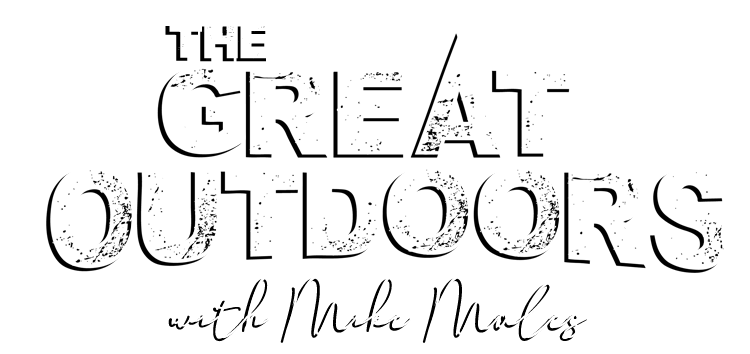



Blog Entry Date: 1/3/2023
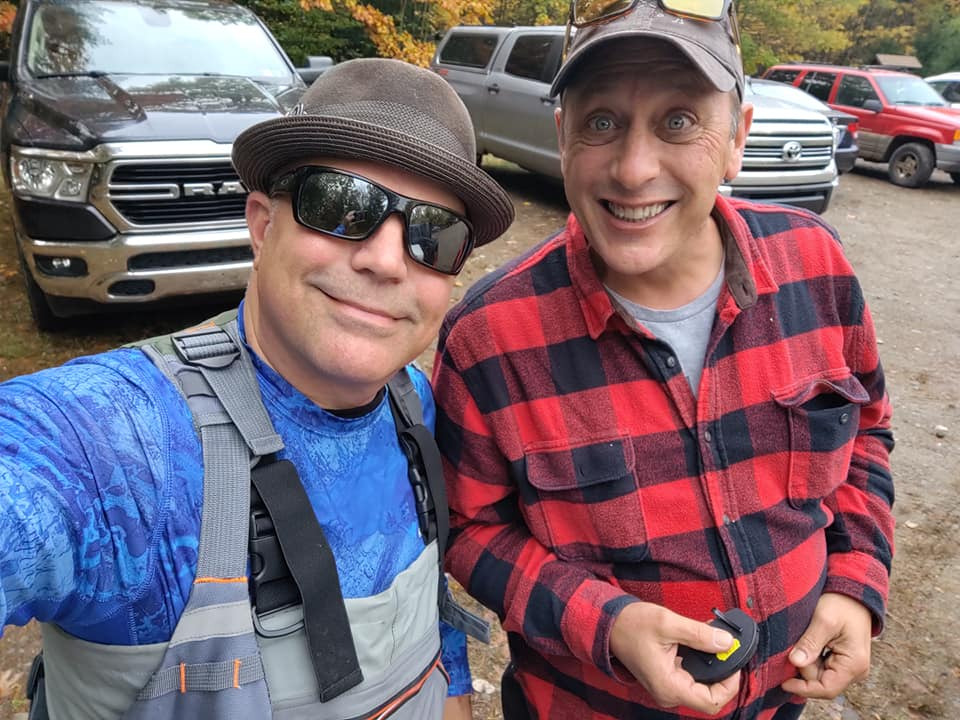
A random river might not have suitable sites for spawning, but a salmon's birthplace is already a proven success for spawning. It may not have mates of the same species. Or conditions might not favor that type of salmon. For all these reasons, we can see why salmon navigate their way home. Oh and the big brown trout and Steelhead follow them out of the lake and into these rivers and streams to feed on the millions of eggs that fall from bellies of the migrating fish.
Allan and I arrived to the parking area and quickly began the process of putting our chest waders and boots on, assembling our fly rods, tied on the flies we wanted to start off with, jammed a sandwich down our necks, and head down the trail to the water.
If you walk fast enough, it is only about a seven minute walk from the parking area to the river. Maneuvering down the trail with your 9 foot fly rod is a battle all in it's own, navigating hanging branches through the twists and turns while you hustle to the water's edge. The air around the Salmon River has it's own smell. I personally don't find it offensive as my senses translate it to that of huge fish smacking your line followed by a long hard fight as your drag screams and your arms burn...but it smells like dead salmon. During spawning, salmon reduce their feeding activity and use up all their energy when swimming upstream against the strong current. Once they are done spawning, their bodies keep deteriorating until death.
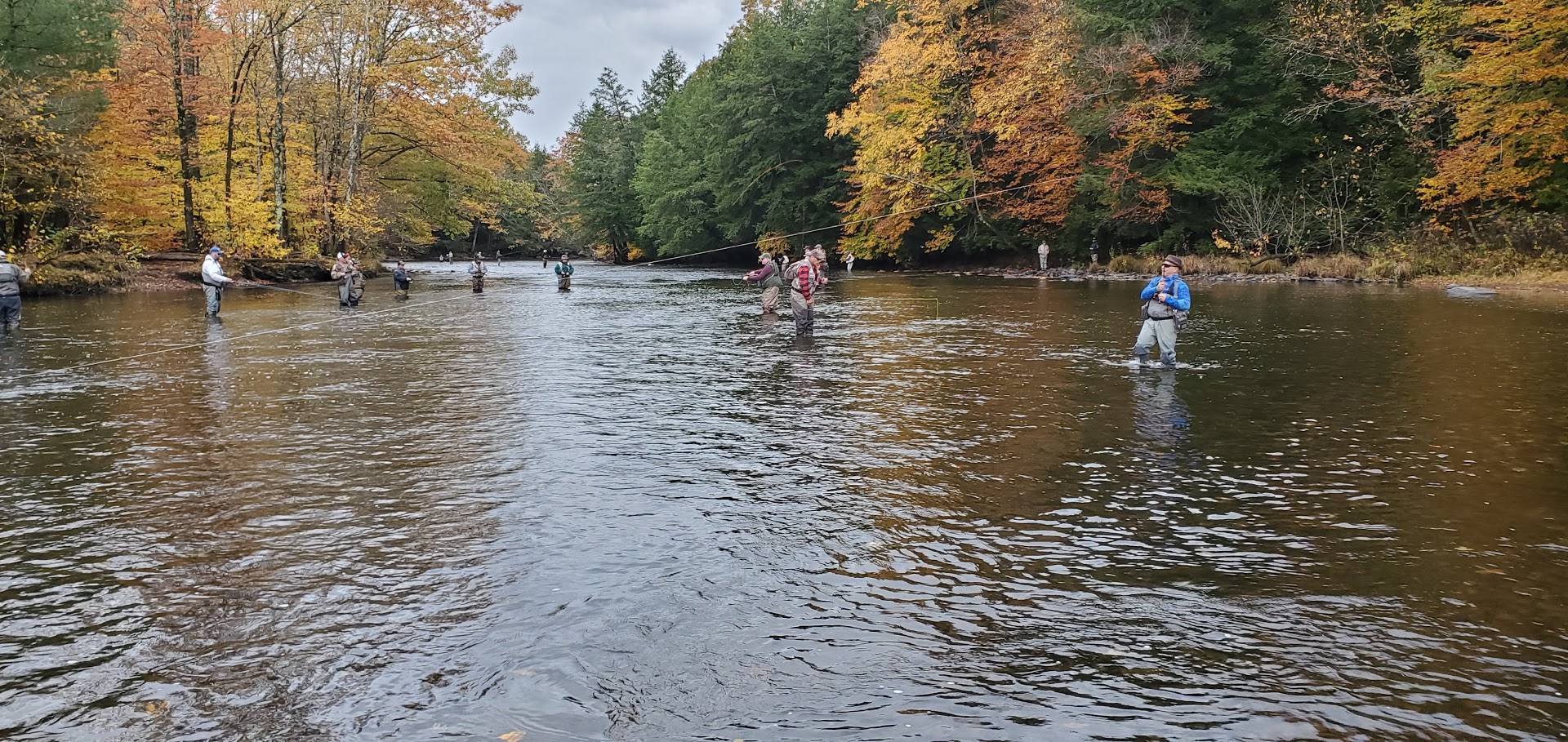

Egg pattern flies are the most common and successful flies you can throw for King Salmon. You can throw other types of flies during the salmon run as well if you are targeting browns, or steelhead, but those species will hit egg patterns too. That is why they are following the salmon anyhow. To get fat on those eggs for the winter months.
We were all getting a few hookups on king salmon here and there, but spawning fish, as I mentioned before, reduce their feeding activity. Even though there are literally thousands of fish moving up river all day long, few of them will actually bite. The one's that do hit your fly, well I am not sure if they are just trying to kill what looks like another fish's egg or if maybe they pick them up in an effort to carry that egg to the spawning area. Who knows?
I decided to move down river a bit, partly to get away from the crowd around the hole I had been fishing for an hour or so, and also because I wanted to try to get into some other species. I hiked down about a hundred yards or so and found some faster water. I had to position myself on the opposite side of the river so I could see into the water better. I like sight fishing. If I can see fish in the water, I can cast to them and have a better chance of actually hooking up rather than blindly casting into a dark abyss where there may not be any fish at all. Wading in the Salmon River also requires chest waders and a wading staff (if you are smart).
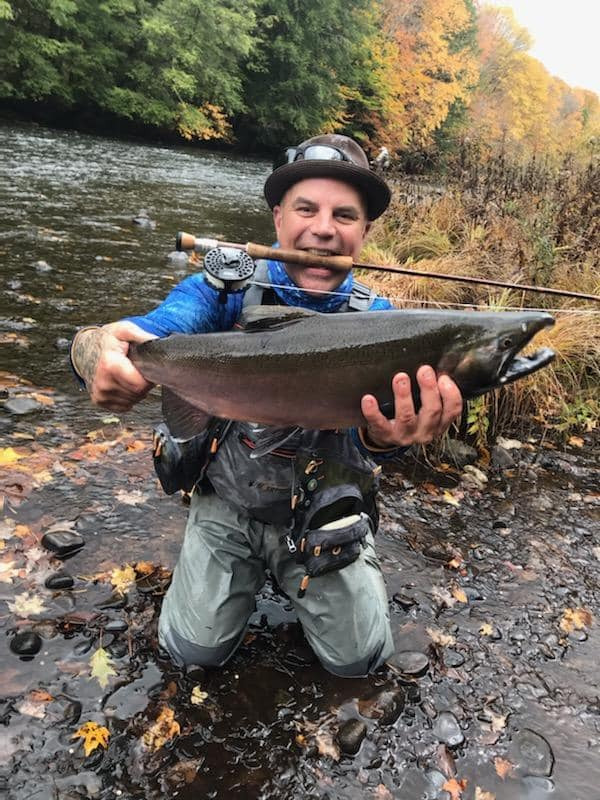
"COHO!" Jim shouted over my right shoulder. "That is a BIG coho man!"
And so the fight began. The fish took off pulling line as my drag fought against it's pull. My line bowed over and the fish took off, first up river, then down river. I was just trying to hold on. This was a COMPLETELY different fight than a King Salmon. This fish was pissed off and did NOT want to be caught. Jimmy gave me instructions as I fought the fish. At the time I was only on my second trip up to New York and this was my FIRST coho salmon.
"Keep your hands on the cork! Let him run! Now turn his head! You got all day to fight this fish so don't lose him!" were all i could here as Jimmy yelled at me like a drill instructor preparing me for war.
I listened to Jim's instructions and did my best while the fast water pulled at my feet and calves, while I tried to keep my footing and fight the fish. It was an incredible fight unlike any I had experienced up until that fish. Just when I would gain a bunch of line back and got the fish closer to me, it would make another run, and Jimmy would start shouting instructions at me again. The coho took several runs and it felt like forever until I could feel it starting to tire.
If you ever have an interest in trying your hand at salmon on a flyrod in upstate New York, I suggest you try it.
Tight Lines,
Michael S. Males
Photo Credit: "King Dave" Starcher and "Cornhole Jim" Coyle
Salmon River - New York
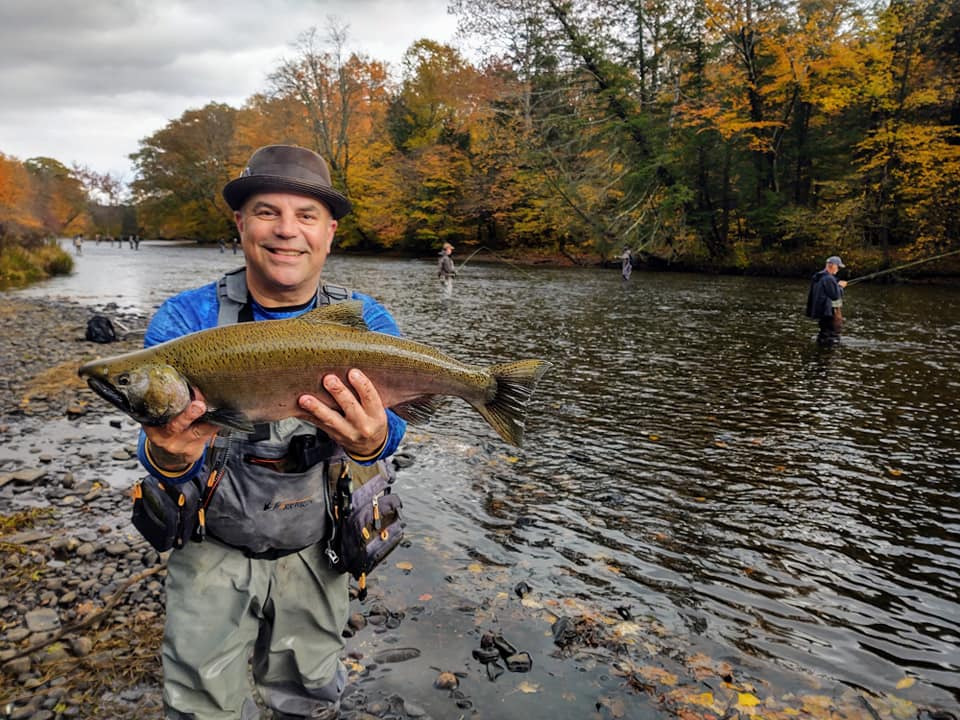
Copyright 2025 Michael S. Males - All Rights Reserved.
Site Design and Hosted by Sunken Treasure Design